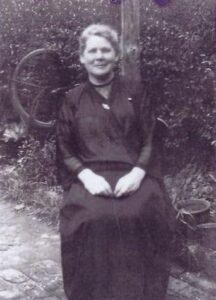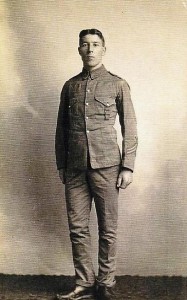Category: Military
Rank: Private 8340
Regiment or Ship: 2nd Battalion Hampshire Regiment
Service Number(s): 8340
Date of Birth: 1888
Date of Death: 28.04.1915
Place of Death: Gallipoli
Place of Burial / Memorials:
Helles Memorial
Address: 1 Laburnham Cottages, Ninfield Road, Sidley
Photos and newspaper articles
Family Information
Parents:

George Isted born 1860. In 1881 he is listed as living at 83 Foord Road, Folkstone Kent. By 1891 he is living at 7 Brickyard Row, Sidley Green and his profession is listed as “general labourer”. By 1911 the family are living at 1 Laburnham Cottages, Sidley (Ninfield Road). George is listed as an “Excavator”. He died on 14th October 1915, just a few months after the death of his oldest son George Albert.
Siblings:
Naomi Mary Isted born 1890 and died 1981 aged 90.
Reginald Thomas born 1892 Battle, and died 1972 aged 80 in Hastings W0154 ISTED Reginald Thomas (Private)
Sidney John Isted born 1894 Battle and died 23rd July 1916 at Richebourg St. Vaast. W0037 ISTED Sidney John (Private)
Arthur Henry born 1897 Battle W0155 ISTED Arthur Henry (Private)
Louisa Emily Isted born 11 April 1899 Battle and died 1982 aged 83 in Hastings.
Albert Stephen Isted born 4th Mar 1901 and died September 1974 in Battle aged 73.
Naomi Mary Isted married Arthur James Hammond in 1911. He enlisted on 11th December 1915. W0156 HAMMOND Arthur James (Gunner)
Louisa Emily Isted married Harold C. Izzard in 1927 in Eastbourne. Their son Harold John Izzard was born in Eastbourne in 1928 and is the father of Bexhill Museum’s patron Eddie Izzard.
First World War Experience
George joined the 2nd Hampshire Regiment in January 1909 at the age of twenty, and served his first two years in South Africa followed by a further two years in Mauritius. The Regiment was based at the Indian town of Mhow in 1914 when war broke out and they hastily returned to England, leaving Bombay on 16th November and arriving at Plymouth on 22nd December. This enabled him to spend the first Christmas in six years at home with his family.
His Regiment moved to Stratford On Avon in February 1915, joining the 88th Brigade, 29th Division and then on to Warwick the following month. On 29th March they embarked at Avonmouth bound for the Egyptian city of Alexandria, arriving on 2nd April. After just eleven days they sailed to the Greek island of Lemnos in preparation for the landings at Gallipoli on the morning of 25th April 1915.
That morning the majority of the Hampshire Regiment, less two Companies, were transported aboard the Andania to land at V beach, west of Sedd El Bahr, as part of the 88th Infantry Brigade. The majority of the remaining troops sailed aboard the River Clyde, an old collier fitted to run aground and allow it’s hidden cargo to storm onto the beach through specially cut doors let into each side of the ship.
The landing parties came under heavy machine gun fire from the defending Turks and suffered grievous casualties, and many of the Hampshires sought refuge within the grounded River Clyde. The few who made it through the shallows and across the three hundred yards of sand, could do nothing other than shelter beneath the steep cliffs, while those aboard the River Clyde were held there by the murderous storm of bullets raining down on them.
During the afternoon the firing slackened, and before darkness fell a party moved to the right of the beach, climbed the cliff, cutting away many strands of barbed wire and dashed into the fort, forcing the Turks to flee. By dawn they had established themselves on the Northern face of the fort and under their cover the remaining troops came ashore a full day late, the wounded received help and the beach was secured.
As the 26th April progressed the Hampshires advanced and over the course of the next few hours cleared the Turks from the village of Sedd El Bahr before consolidating at a row of windmills on a hill overlooking Morto Bay. However the fighting had been fierce and the Regiment suffered nearly sixty casualties.
The next day orders were received to advance on Krithia and the Hampshires advanced to a position two and a half miles south west of the town where they entrenched. On the morning of the 28th April the advance continued and reached a point only a mile away from Krithia before a counter attack by the Turks inflicted severe casualties amongst the Hampshires and they were forced to withdraw.
George Isted and seventy three of his comrades from the 2nd Battalion were killed in this action.
Information courtesy of John Hammond.


